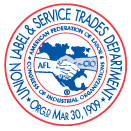On January 9, the US Department of Labor issued a final rule that could prevent employers from misclassifying workers as “independent contractors,” a step that could bolster both legal protections and compensation for millions of workers. The rule, which will take effect on March 11, restores an earlier standard that required companies to weigh a variety of economic factors together to determine whether a worker is an employee or an independent contractor.
“Misclassifying employees as independent contractors is a serious issue that deprives workers of basic rights and protections,” explained Acting Secretary of Labor Julie Su. “This rule will help protect workers, especially those facing the greatest risk of exploitation, by making sure they are classified properly and that they receive the wages they’ve earned.”
Under the Federal Labor Standards Act (FLSA), employees are entitled to minimum wage, overtime pay, and other benefits. Independent contractors are not entitled to such benefits.
The DOL’s final rule directs employers to consider six criteria for determining whether a worker is an employee or a contractor, without predetermining whether one outweighs the other.
The six criteria include:
– The degree to which the employer controls how the work is done.
– The worker’s opportunity for profit or loss.
– The amount of skill and initiative required for the work.
– The degree of permanence of the working relationship.
– The worker’s investment in equipment or materials required for the task.
– The extent to which the service rendered is an integral part of the employer’s business.
That’s a change from the Trump-era rule, which prioritized two criteria: how much control a company has over its workers and how much “entrepreneurial opportunity” the work provides.






